Enjoy the stories in this section. Some of them may even have been true!! Have a favorite war story you've been relating over the years? Well sit down
and shoot us a draft of it. Don't worry, we'll do our best to correct grammar, punctuation, and spelling before we publish it. to us and we'll publish them for all to enjoy.
The Night I Almost Killed a Friendly
By Ron (Baby Huey) Huether
Ahhhhhhh Tay Ninh Base Camp, what a beautiful
standby location in the
shadow of Nui Ba Den, the sacred Black Virgin Mountain. Anyone assigned
to the 15th Med Bn spending time at Tay Ninh Base Camp remembers being
told about the location of the Buddhist shrine on the side of the
mountain. A Vietnamese myth centers around a woman, Bà Đen, falling in
love with a soldier and then through betrayal or suicide Bà Đen dies on
the mountain. It has special significance to the Vietnamese Buddhist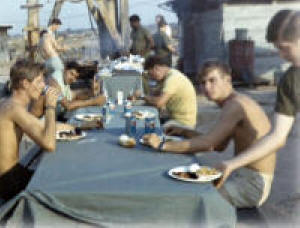 population and has a famous shrine about two thirds of the way up the
mountain.
population and has a famous shrine about two thirds of the way up the
mountain.
Tay Ninh Base Camp was the home of Charlie
Company, 15th Med Bn and most of the time one Medevac
helicopter. For as close to the Cambodian border as Tay Ninh Base Camp
was, it was not the busiest AO for 15th Med Bn. There was
time for cook-outs and playing with the two clearing stations mascots –
Ottis the pig and Saddles the dog.
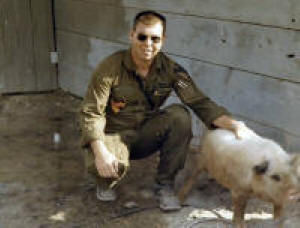 Not sure how Saddles came to be a mascot at
Charlie Company, but I do remember the lineage of Ottis. Ottis was an
orphaned pig raised by the female dog mascot belonging to the 25th
Military Police Company at Cu Chi. Ottis could do anything his
littermates could; bark, roll over, sit, etc. But alas, a new MP
commander didn’t see the humor in the mascot for a police unit being a
pig. He gave the order that Ottis be removed.
Not sure how Saddles came to be a mascot at
Charlie Company, but I do remember the lineage of Ottis. Ottis was an
orphaned pig raised by the female dog mascot belonging to the 25th
Military Police Company at Cu Chi. Ottis could do anything his
littermates could; bark, roll over, sit, etc. But alas, a new MP
commander didn’t see the humor in the mascot for a police unit being a
pig. He gave the order that Ottis be removed.
Through a series of lucky events for Ottis,
he ended up at the clearing station at Tay Ninh Base Camp. And so Ottis
enjoyed his daily walks around the clearing station, showing off his
tricks and receiving lots of pats on the head.
As time passed and we headed into 1971 and
the draw-down of the Cav, Tay Ninh Base Camp was one of the 1st
Cav’s location going through “Vietnamization.” Day-to-day security of
the base camp would slowly be given to the Army of the Republic of
Vietnam (ARVN). At first every other bunker on the perimeter was manned
by ARVN soldiers and later ARVN soldiers were placed in every bunker on
the perimeter.
Curious problems started happening in the
bunkers manned by the ARVN. Many of the bunkers at night seemed to be
manned by inebriated ARVN soldier that would periodically shoot into the
sky. One nighttime game they seemed to enjoy was shooting at our Medevac
helicopters as we departed Tay Ninh Base Camp and again when we returned
with a patient. We Medevac pilots learned to extinguish the nav lights
and the rotating beacon and honk the nose over to gain as much airspeed
as possible while holding the skids only inches above the runway. Then
just before an imminent impact with a perimeter bunker the pilot would
do a quick cyclic climb, clear the bunker, and descend to treetop level.
By doing this we could approach, climb over, and depart faster than the
ARVN soldier could track and shoot at us. Of course, the same procedure
was used at night when returning with a patient.
Rumors (or facts) started circulating that
some of the ARVN soldiers were leaving their posts in the perimeter
bunkers at night and sleeping in the village. This left gaps in the
perimeter defense that became worrisome for us.
One day, while stationed at Tay Ninh Base
Camp, I received a briefing that in the evening the base camp was going
to Condition Red – an attack on the base camp was forthcoming. Night
came, and my Medevac crew retired to our cots in our GP Medium tent,
Condition Red was on our minds. Were the NVA sappers going to breach our
perimeter through an empty perimeter bunker? If NVA sappers quietly
snuck in the base camp our GP Medium tent offered no protection. About
0100 I heard tip-toeing footsteps outside our tent. Having gone to sleep
with my snub-nosed 38, I positioned myself, so I had a clear view of the
front tent flap. Sure enough, the footsteps outside slowly made their
way around to the front tent flap. And then the tent flap slowly parted.
I was seconds away from blowing whomever came into the tent when I heard
two low-pitched grunts and realized it wasn’t the enemy, but just Ottis
making his nightly rounds.
THE RESCUE OF CURLEY BOWMAN
Introduction and Summary
BY Terry A. McCarl
NOTE: This War Story is the introduction and companion story to two
other War Stories: “Losing Cap” by Curley Bowman and “Medevac Down” by
David Sheets. The full story, including this “Introduction and Summary,
“Losing Cap” and “Medevac Down,” is 73 pages long and published as
“Mission 1, The Rescue of Curley Bowman” in the book, Helicopter Rescues
Vietnam, Vol. VIII by Phil Marshall ($19.95). Besides these three war
stories, the chapter in the book contains: photographs; plus commentary
by Kevin Raftery, the medic on the Medevac aircraft that rescued Curley;
by Ron Carew, Artillery Forward Observer responsible for calling in
artillery support; and by Glen Cunningham, Infantryman with C Co., 2nd
Platoon, 2nd of the 8th Cavalry. Carew and Cunningham were on the ground
that day and witnessed the events.
Helicopter Rescues Vietnam, Volume VIII, and Phil's other 10 books
may be purchased by going to
Amazon.com. If you desire
a copy of any of the book signed by the author with a written
dedication, it may be purchased directly from Phil for $20.00. Send cash
or check (payable to Phil Marshall) with instructions where to send the
book and what, if anything, you would like in the dedication. His
address is 1063 Cardinal Dr., Enon, OH 45323, the phone is 937-371-3643,
and email is dmz.dustoff@yahoo.com . Phone or email with any questions.
Helicopter Rescues Vietnam, Volume VIII also contains two additional
15th Med BN missions “Mission 9, Mission Stories” by MAJ (Ret,) Larry
Hatch and “Mission 5, Hot Lunch on the Fly” by SFC (Ret.) Larry Bird.
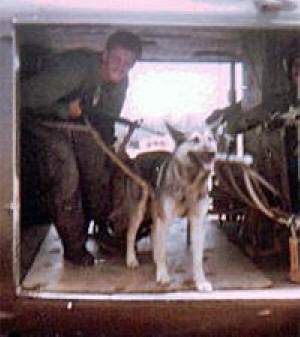 On 28 June 1971, scout dog handler, Carter "Curley" Bowman and his
scout dog, Cap (4K87), of the 34th Infantry Platoon (Scout Dog), were
attached to C Company, 2nd Battalion, 8th Cavalry, which was on patrol
near LZ Fanning, east-southeast of Fire Support Base (FSB) Mace. The
patrol unexpectedly encountered a well-defended resupply point, manned
by soldiers of both the North Vietnam Army (NVA) and the Viet Cong (VC).
In the ensuing firefight, Curley was shot seven times over a three-hour
period, with injuries including a sucking chest wound. His scout dog,
Cap, was killed by enemy fire. Three members of C/2/8; were Killed In
Action (KIA): SSG Willie James, Mobile, Alabama; SGT Gerald Dowjotas,
Hillside, Illinois; and CPL Bernard F Brzezinski, Clearwater, Florida.
On 28 June 1971, scout dog handler, Carter "Curley" Bowman and his
scout dog, Cap (4K87), of the 34th Infantry Platoon (Scout Dog), were
attached to C Company, 2nd Battalion, 8th Cavalry, which was on patrol
near LZ Fanning, east-southeast of Fire Support Base (FSB) Mace. The
patrol unexpectedly encountered a well-defended resupply point, manned
by soldiers of both the North Vietnam Army (NVA) and the Viet Cong (VC).
In the ensuing firefight, Curley was shot seven times over a three-hour
period, with injuries including a sucking chest wound. His scout dog,
Cap, was killed by enemy fire. Three members of C/2/8; were Killed In
Action (KIA): SSG Willie James, Mobile, Alabama; SGT Gerald Dowjotas,
Hillside, Illinois; and CPL Bernard F Brzezinski, Clearwater, Florida.
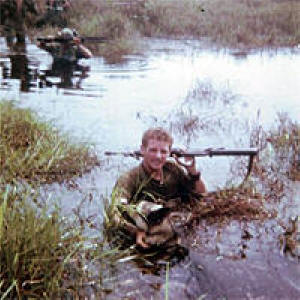 Eighteen wounded soldiers were taken by Medevac to the Medical
Company, 1st Composite Service Support Battalion Clearing Station at FSB
Mace, after a rigorous series of events!
Eighteen wounded soldiers were taken by Medevac to the Medical
Company, 1st Composite Service Support Battalion Clearing Station at FSB
Mace, after a rigorous series of events!
LTC (then CPT) David Sheets,
Aircraft Commander; Mark Holiday, SP5 Crew Chief (functioning as Door
gunner that day); and Kevin Raftery, SP5 Medic, were there and remember
much about the events and the soldiers involved.
According to their
recollections, there were three aircraft involved in this incident. The
first Medevac was attempting to pick up the wounded when it was hit by
four Rocket Propelled Grenades (RPGs) and destroyed. The second Medevac
was able to rescue and evacuate all five of the crew from the first
Medevac. A third Medevac crew was a hastily assembled at Bien Hoa that
picked up the wounded Infantrymen and others and transported them to the
Medical Company, 1st Composite Service Support Battalion Clearing
Station at FSB Mace.
Company, 1st Composite Service Support Battalion Clearing
Station at FSB Mace.
After stabilizing medical treatment, Curley was transported from FSB
Mace to the 24th Evacuation Hospital in Long Binh for about a week, then
to the Philippines for about a month, and then back to the United
States. He has been on a quest for as much information as possible about
the incident. His goal is to find and express his appreciation to as
many soldiers involved in saving his life as possible.
Following is a summary of the personnel involved. "In contact" means the
15th Medical Battalion Association is in communication with that person.
Aircraft No. 1
- Aircraft Commander: CPT David Sheets (In contact)
- Copilot: 1LT William Cooley (In contact)
- Crew Chief: SP5 Ray Flynn (Looking for)
- Medic: SP5 Larry Lund (Deceased)
- Door Gunner: SP4 Richard Dubray (Looking for)
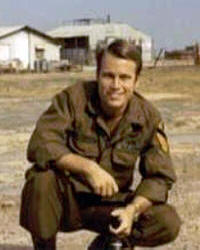
David Sheets

William Cooley
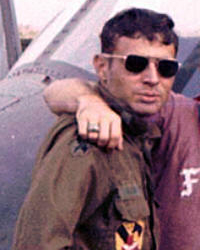
Ray Flynn

Larry Lund

Richard Dupray
Aircraft No. 2
- Aircraft Commander:
CW2 Warren G. Jackson (Deceased)
- Copilot: CW2 Ralph D. McCall (In contact)
- Crew Chief: SP5 James C. Keys (Deceased) (From memory of CW2
Ralph D. McCall. Not yet confirmed by official records.)
- Medic: SP5 Lawrence F. Bird (In contact)
- Door Gunner: Unknown
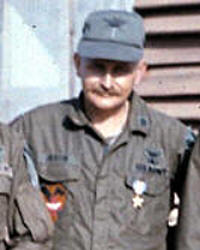
Warren Jackson
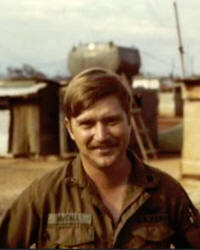
Ralph McCall

James Keys

Lawrence Bird
Aircraft No. 3
- Aircraft Commander: Unknown
- Copilot: Unknown
- Crew Chief: SP5 Harry Halle (In contact)
- Medic: SP5 Kevin Raftery (In contact)
- Door Gunner: SP5 Mark "Doc" Holiday (In contact)
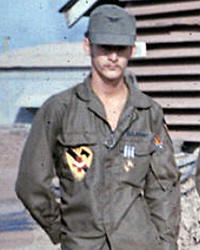
Harry Halle
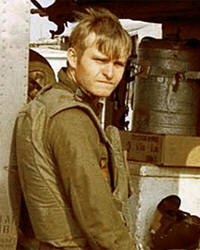
Keven Raftery

Mark (Doc) Holiday
The pilots on
Aircraft No. 3 have not been identified as yet, due to uncertainty and
inability to make contact with some of the individuals possibly on that
aircraft. The list of pilots having possibly been on that aircraft that
day is 1LT Benito Garcia, WO1 Ralph Mora, WO1 Bill Strohmer, CPT Jack
Powell, 1LT John Goldsmith, and WO1 Burton Deehring (Deceased). So far,
we are unable to contact Garcia or Mora, and Strohmer, Powell, and
Goldsmith cannot say with certainty that they were or were not on
aircraft No. 3.

George Tyler
Medical Treatment Personnel at Medical Company,
1st Composite Service Support BN Clearing Station at FSB Mace: According
to Dr. (MAJ Ret.) Robert Cathey, the first Commanding Officer of Medical
Company, 1st Composite Service Support Battalion, and later Medical
Company, 215th Composite Service Battalion (Support), one of the doctors
who treated Curley and other wounded at FSB Mace was CPT George Tyler
(1939 - 2005). No other medical treatment personnel involved have been
identified.
If anyone was in, or knows anyone that was in any of
these three aircraft, or additional aircraft involved that day, or in
the Clearing Station at FSB Mace when 18 wounded were brought in on 28
June 1971, or knows who the unknowns were, or has any contact
information for the people we are looking for, please send an email to
the 15th Medical Battalion Assn. Historian
(historian@15thmedbnassociation.org) or call 402-457-9807.
When
the 1st and 2nd Brigades of the 1st Cavalry Division stood down in April
of 1971 and departed for Ft. Hood, TX, the Division Support Command
Battalions, including the 15th Medical Battalion, ceased to exist in
Vietnam on or about April 8, 1971. At that time, the 1st Composite
Service Support Battalion (CSSB) was created for the purpose of
supporting the 3rd Brigade, which remained in Vietnam until June 1972.
On April 30, 1971, the 1st CSSB was re-designated as the 215th Composite
Service Battalion (Support).
It is believed all persons
involved in these missions on 28 June 1971 were members of the 15th
Medical BN prior to on or about 8 April 1971 when they all became
members of Medical Company, 1st Composite Services Support Battalion.
On 30 June 1971, Medical Company, 1st CSSB was re-designated as
Medical Company, 215th CSB (Support). Awards and decorations,
including a Distinguished Service Cross for CW2 Warren Jackson, for
valorous actions that day, identify recipients as with the 215th CSB.
EPILOG ON THE INVESTIGATION FOR THIS STORY
In December of
2017, Curley Bowman found this Web site and sent an email to webmaster
Ron “Huey” Huether asking if our Association had any information
relating to his rescue on 28 June 1971. Huey posted Curley’s inquiry on
our Facebook page (15th Medical Battalion Association).
Immediately,
Mark “Doc” Holiday posted a comment saying he was the door gunner, Kevin
Raftery was the medic, and Harry Halle was the crew chief on a crew that
was quickly assembled at Bien Hoa that day. He also commented that Ray
Flynn was the crew chief on the first-up bird at FSB Mace that was shot
down in the vicinity of FSB Fanning that day and that Warren Jackson was
the aircraft commander on the second-up aircraft at FSB Mace that
rescued the downed crew of the first-up aircraft. Mark’s comments really
got the ball rolling with the gathering of information relating to this
incident, and his response is much appreciated!
Before contacting the
15th MBA (Medical Battalion Association), Curley had gathered several
documents including his Purple Heart award, and a list of other wounded,
which included CPT David Sheets of Medical Co., 1st CSSB (1st Composite
Service Support BN). David Sheets was found to be a member of the 15th
MBA, and his contact information, albeit out of date, was on our
database, or Unit Member Search List. Working with that information,
Curley was able to locate Sheets, who had written his own unpublished
detailed account of his experiences that day.
Early on, in December
of 2017, Curley and I agreed to attempt to identify, locate, and contact
as many of the soldiers in all three Medevac crews as well as medical
treatment personnel at the Clearing Station at FSB Mace.
There were
several obstacles to this effort. (1) We had no official personnel
rosters for 15th Med BN from the National Archives past October of 1970.
(2) Of the fifteen 15th Med BN persons involved, only 7 were members of
the 15th MBA, of which only 2 had up-to-date contact information, and
(3) The incident occurred in the midst of a time of transition from the
15th Medical BN to Medical Co., 1st CSSB, which was subsequently
re-designated as Medical Company, 215th CSB.
Locating and contacting
these individuals required the employment of every “trick in the book,”,
including Facebook, Whitepages.com, Google searches, the Vietnam
Helicopter Pilots Association (VHPA) member and potential member lists,
and the VHPA Died After Tour List.
Curley and I started to build a
“Task Force” group by email as more and more people were located; not
just individuals that were on the three aircraft involved, but also
others who were not, but were in the unit at that time who could
remember details of the event. The primary means of communication was
email. This task force consisted of:
- David Sheets
- Bill Cooley
- Larry Bird
- Ralph McCall
- Mark Holiday
- Kevin Raftery
- Harry
Halle
- Jimmy Norris
- Jack Powell
- John Goldsmith
- Bill Strohmer
- Robert Cathey
- Ron Huether
- Ron Carew
- Glen Cunningham
The 15th Med BN Association Facebook Group was also very helpful in
providing information about the incident and personnel involved.
Curley made a two-pronged effort to identify and locate the soldiers
involved, both from 15th Med BN (and successor units), and persons who
were on the ground with him that day. Curley took this effort on all by
himself and accomplished the mission.

Raftery, Curley, and Holiday
Typically, as far as the 15th
Med BN personnel were concerned, I researched to the point of getting a
phone number or in some cases, a street address, and Curley would take
it from there, with bulldog tenacity until he made contact with each
individual that we were able to find.
Curley and I are not
through looking for the remaining participants. We are pleased that most
of them have been identified and contacted. Hopefully, someone reading
this article with some additional information will contact me with it.
To me, the high point of this effort was when I had the opportunity, at
the 20-year 15th Medical BN Association reunion in Williamsburg, VA in
April of 2018, to introduce Curley to his rescuers, Kevin Raftery and
Mark Holiday!